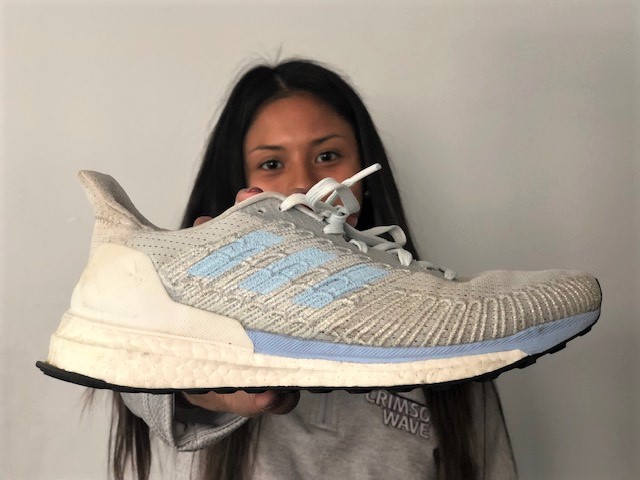To the untrained eye, running may seem like a simple sport. It doesn’t require a court, a field, or even much gear at all; just throw on a pair of functional training shoes and you’re good to go! Though it’s true that a good pair of shoes really is the bare necessity for a runner, there’s a certain science to choosing the right pair of running shoes, and it requires more effort than just picking up the cheapest pair at your local sporting goods store. Unlike other sports, every little detail can make a difference in your running performance, especially when it comes to footwear.
Diana Morecraft, Director of Training Programs at Fleet Feet Sports in Schererville, shared the importance of selecting the right type of shoe for a runner’s individual foot structure.

“Making sure you choose the right fit for your foot helps prevent injury, makes a difference in how long you’re able to run, increases stabilization and creates a more efficient gait,” Morecraft explained. “Properly fitted shoes have the right amount of cushioning and support needed to help you perform at your best and stay healthy.”
When getting fitted for shoes, there are several categories that your foot could fall into: neutral, pronation, or supination. Each one requires a different shoe style to provide the best possible support for the wearer.
“Neutral stability shoes are best suited for runners that have a pretty straight foot or for those that supinate, which means their foot rolls outward with every stride,” Morecraft said. “We also have shoes that help with pronation, the inward rolling of the foot. The key is finding out which type of stability your feet need and getting fitted for a shoe based on that.”
With a seemingly endless array of brands and styles to choose from, finding your best fit can seem like a Herculean task, especially for runners who are new to the sport.
“That’s where we come into play,” Morecraft said. “When someone comes in to be fitted, we might find that their foot is more triangular in shape, or more square, or more narrow. Just based on that initial observation and analyzing their gait we know already if they are neutral or stability. From there, we can then connect them with the best brands and options for their foot type.”
Finding your fit can feel like a wizard finding their wand in the magical world of Harry Potter; once you find your “sole-mate” there’s just no beating it. Every seasoned runner has their go-to shoe, and likely wouldn’t consider running in anything else. The loyalty built between a runner and their shoes is unparalleled, established through countless miles on pavement, trails, and tracks.
“My favorites vary between Hoka and Altra,” Morecraft said. “I like shoes with bigger toe boxes, lower drop, and a lot of cushion which both of those definitely provide.”
Walking into a running store can induce sensory overload, with many runners being captivated by the dozens of colorful options that line the walls. Though it might be a pretty sight, Morecraft strongly urges anyone looking to purchase new shoes to ignore the rainbow on the wall and go by feel alone.
“I wish runners would be colorblind when they come to get fitted,” Morecraft said. “It helps a lot when you can close your eyes and go by feel and not just color. Colorful shoes are great to look at, but pretty pointless if they’re not going to help you and do their job.”
Anyone serious about taking up running should make sure their shoes fit like a glove, external appearance aside, whether they’re a casual jogger or competitive athlete.
“I would also say to not go on recommendations of other people, even if they’ve been in the sport for a long time, because what works for them might not work for you,” Morecraft said. “Keep an open mind, feel it out, and go with what works for you. When you find your shoe, you’ll know.”


